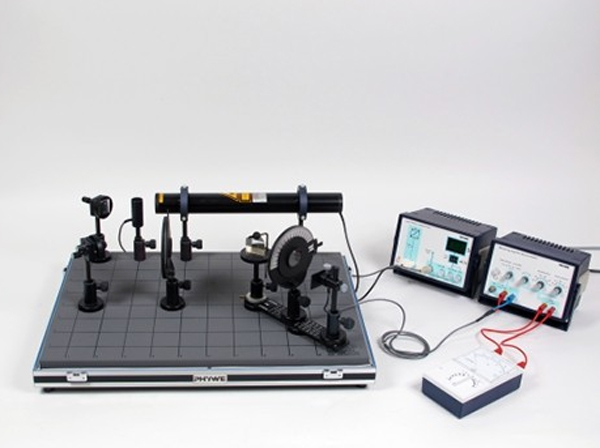Fresnel’s law – theory of reflection

Plane-polarized light is reflected at a glass surface. Both the rotation of the plane of polarization and the intensity of the reflected light are to be determined and compared with Fresnel’s formulare for reflection.
- see that reflection at a glass surface changes some properties of light
- find out that at special angles, light can be completely polarized upon reflection
- very versatile optical base plate
Prism, 60 degrees, height = 36.4mm, flint
Optical base plate with rubber feet
He/Ne Laser, 5 mW with holder
Magnetic foot for optical base plate
Adjusting support 35 x 35 mm
Surface mirror 30 x 30 mm
Rotational guide rail with angular scale
Prism table with holder for optical base plate
Polarizing filter for optical base plate
Photoelement
PHYWE Universal measuring amplifier
Voltmeter, 0.3-300 V DC, 10-300 V AC
Connecting cord, 32 A, 500 mm, red
- The reflection coefficients for light polarized perpendicular and parallel to the plane of incidence are to be determined as a function of the angle of incidence and plotted graphically.
- The refractive index of the flint glass prism is to be found.
- The reflection coefficients are to be calculated using Fresnel’s formulae and compared with the measured curves.
- The reflection factor for the flint glass prism is to be calculated.
- The rotation of the polarization plane for plane polarized light when reflected is to be determined as a function of the angle of incidence and presented graphically. It is then to be compared with values calculated using Fresnel’s formulae.
- Electromagnetic theory of light
- Reflection coefficient
- Reflection factor
- Brewster’s law
- Law of refraction
- Polarization
- Polarization level
